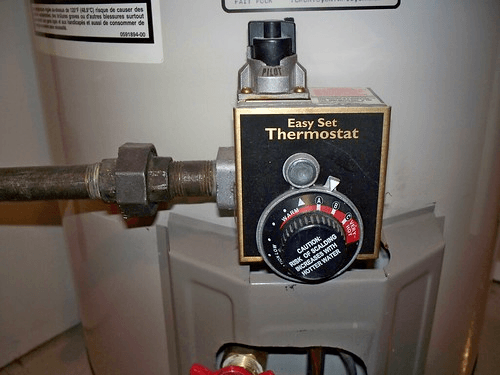
Having an energy-efficient home means that you’re using less energy to do the same jobs, thus reducing your home’s energy waste and saving you money. There are dozens of ways you can minimize your energy usage, so we’ve provided a small sampling of what you can do to reduce your carbon footprint.
Add Faucet Aerators
You probably use a faucet in your home several times each day. Faucet aerators are designed to reduce the tap’s flow to 1.5 gallons per minute or less instead of the standard flow of 2.2 gallons per minute, according to the U.S. Environmental Protection Agency. You can purchase a faucet aerator and easily install it by screwing it onto the nozzle of your faucet. Overall, faucet aerators save energy by reducing the amount of hot water you use.
Change the Filters
It’s important to change or clean your HVAC filters regularly. A dirty filter will cause your HVAC system to work harder and run longer than necessary to reach your desired indoor temperature. For the average one-inch filter, you should change out the filter every 30-60 days. If you have pets or suffer from allergies, you may need to change the filter sooner to maintain clean indoor air.
Drop the Water Heater Temperature
Most water heaters have a temperature setting of 140 degrees Fahrenheit, but most households operate fine at 120 degrees Fahrenheit. Go ahead and adjust the temperature by 20 degrees to help save energy. Whenever you plan to be away for more than a few days, turn the water heater’s temperature way down since there’s no reason to heat the water you won’t use. Just don’t forget to adjust the temperature back once you return.
Install Energy-Efficient Windows
Whether you’re in a new or existing home, energy-efficient windows are a quality choice. The U.S. Department of Energy says that windows are responsible for 25-30% of residential heat loss and gain. With the advancement in window technology, such as double-glazing and low-emissive (low-E) coatings, the newer windows can reduce your home’s heat loss and gain. Check for the Energy Star label to make sure you’re purchasing the most efficient option.
Insulate Your Attic and Basement
Adding to or repairing your home’s insulation is one of the cheapest and easiest energy fixes you can complete. Insulation keeps the cool air inside your home during the summer and the warm air inside during winter. A large amount of heated or cooled air can escape if your attic and basement aren’t properly insulated. If your attic has less than 11 inches of fiberglass or 8 inches of cellulose, it’s best to add more insulation. We offer insulation inspections to make sure your home’s insulation is properly installed.
Lower Your Thermostat
If you have a programmable thermostat, program it to drop the temperature 3-5 degrees whenever you’re not at home. According to the U.S. Department of Energy, lowering the thermostat by 7-10 degrees for eight hours can save about 10% annually. If you have a smart thermostat, it can adjust the temperature based on your usage patterns and potentially save you additional money.
Optimize Your Laundry
When selecting a washing machine, opt for a front-loading one since it is more efficient than a top loader. Today’s washing machines and detergents can clean your clothes without the need for hot water. Even if you set the washer’s temperature to warm, it will use half of the energy needed to wash clothes in hot water. Also, make sure you have a full load before operating the machine. Use the high-speed spin setting to remove excess moisture from the clothing. This reduces the energy needed to dry them.
Pull the Plug
You might be tempted to leave devices plugged into outlets when you’re not using them. However, when multiple items are plugged into a power strip, they’re ever so slightly using energy even when they’re off. Computers, televisions, and large appliances can also add to your electric bill even when you’re not using them. Plan to unplug power strips and larger appliances, if possible, before leaving on vacation to save energy.
Replace Your Light Bulbs
The U.S. Department of Energy states that 5% of the average household’s energy budget goes toward lighting. If you swap out your old incandescent light bulbs with energy-efficient ones, you can cut your energy bill. Traditional incandescent bulbs give off 90% heat and 10% light, so you can save energy by replacing these bulbs with compact fluorescent lamps (CFLs) or light-emitting diodes (LEDs). CFL and LED light bulbs use significantly less energy and last longer. For example, an Energy Star-qualified CFL uses about one-fourth of the energy and lasts 10 times longer.
Schedule an HVAC Maintenance Visit
It’s important to have an annual or seasonal maintenance visit from a professional HVAC service team. This ensures that your furnace and air-conditioning unit run at their peak efficiency. This, in turn, saves you money every month. A technician typically checks the system’s connectors, makes sure the parts have the proper lubrication, and that the coils are clean.
Seal Your Leaks
If you feel a draft through your windows or near your door, the cool air can slip in or out of your house, driving up your electric bill. To plug the air leaks, install a door sweep or weatherstripping on your door, or use caulk around your windows. You can also use window putty to seal gaps found around loose windowpanes.
Use Window Treatments
In the winter, keep your window treatments, such as blinds, curtains, and drapes, open during the day to let the sunlight in, and close them at night to prevent the heat from escaping. In the summer, use light-colored window treatments during the day to reflect the sun’s rays away from the window.
Utilize Your Fans
When the weather is hot, try turning on ceiling fans to keep the air circulating and help you stay cool. Using a fan will prolong turning on the air conditioner and reduce energy costs. In the winter, reverse the fan’s direction from counter-clockwise to clockwise to push the hot air back down to the floor level.
These tips are just a few ways you can make your home more energy-efficient. If you have any questions about the services we provide, drop us a line. We’re here to help you reduce your energy costs and save money.
